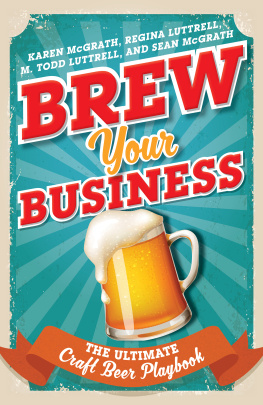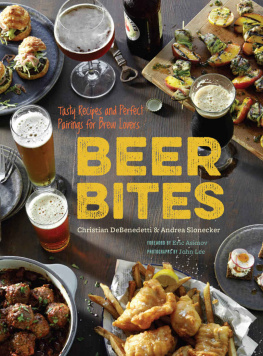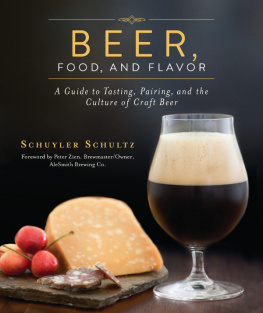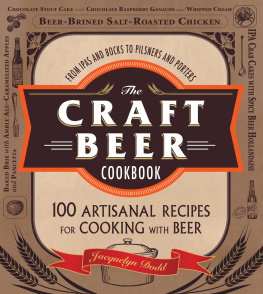Contents
Guide
THE CRAFT BEER BITES COOKBOOK
100 RECIPES FOR SLIDERS, SKEWERS, MINI DESSERTS, AND MOREALL MADE WITH BEER
JACQUELYN DODD
AUTHOR OF The Craft Beer Cookbook

AVON, MASSACHUSETTS
To Cori and Claire, for keeping me going in the most difficult year of my life. I hope to someday give each of you a fraction of what youve given me.
CONTENTS
INTRODUCTION
The Craft Beer Bites Cookbook is about community. Its about the community we build over a good pint and good plate of food. Its about the people we welcome into our lives and into our homes, the ones who always make it to our parties, the ones who drive us to the airport in the early morning hours, the ones who show up to help us move, the people who cheer our successes and pat our backs even in failure. Its about how this community has been built and grown in the world of craft beer, in every tap house, brewery, homebrew club, and hop farm. The world of craft beer is as much as about the people who have built it as it is about the beer they make; thats what joins us all together in the love of a shared fascination.
The Craft Beer Bites Cookbook is about sharing food at parties and gatherings that celebrate the brew and bring people together. Use this book to explore craft beer, whether youre new to the scene or a seasoned pro. Use the recipes as an excuse to try a beer youve never had or as a way to showcase the flavors of a beer youre in love with. Use it as a way to throw a party, celebrate beer, and grow a community of your own. Long live beer, and beer people.

Chapter 1
COOKING WITH BEER: WHERE TO BEGIN
Why would you cook with beer? Why not just drink it like a normal person? There are several practical reasons to cook with beer that trump even the frivolous ability to set a plate of food down in the center of the table and proudly proclaim, I put beer in this! although thats reason enough to pop a pint and pour it into your stockpot.
Taste
The flavor of beer is why we are all here in the first place, isnt it? Weve fallen in love with the taste of this fermented beverage and we cant get enough. The flavor of beer can translate into food in different wayssometimes a mild hint, other times a large, bold presence on the palate. If you made a dish and the flavor was just too much beer for your tender taste buds, there are a few things you can do.
- Just add less beer. But you didnt need me to tell you that. I have faith in your deductive reasoning skills; you could have figured that out on your own. Make sure if you use this completely obvious tactic that you balance the dish. Replace the beer you removed with a liquid that fits the food: milk, water, broth, unicorn tears.
- Use a beer thats less hoppy. Beers with a strong hop presence show up in a dish with a vengeance, especially when reduced. Using a lower-hop beer (for instance replacing a high-hop beer like an IPA with a low-hop beer like a white ale) may give you the taste profile you were looking for.
- If the problem you are having isnt necessarily the beer flavor, per se, but the bitterness it brings to the dish, you can try adding some sugar. Even in savory dishes a bit of sugar or molasses or honey can tame that bitterness and give you the right balance. What if the beer flavor isnt strong enough? If you havent already guessed, its the same advice Ive already given, just in reverse.
- Add more beer, obviously. Remove some of the other liquid youve used in the dish and replace it with beerbut you already knew that.
- You can also use a hoppier beer, like an IPA, which will give you a stronger beer flavor in the final dish.
- Reduce a beer to create a concentrated beer flavor. Cook 12 ounces of beer on the stove down to 12 tablespoons for a more concentrated beer flavor.
If you are unsure where to start when creating a beer recipe, err on the side of caution and add the beer with a light hand. Even if the flavor isnt where you want it, at least dinner will be edible.
Leavening
Leavening is a fancy word for making dough rise. Beer, although mild by itself in its bread-puffing powers, will increase the rise of bread dough, cakes, and other baked goods. It cant be used on its own as a substitute for active yeast, baking soda, or baking powder, but it will give you a lighter, puffier, more tender texture than any other liquid employed in baking when you use it in tandem with a strong leavening agent.
Have a favorite bread recipe that uses water? Just substitute beer for the water (my favorite is a bottle-conditioned wheat beer), and fall even more in love with that recipe. Making a chocolate cake? Use a stout to give it a fantastic rich flavor and moist but tender texture. Keep in mind that beer is fat-free, so if you are replacing a fatty liquid, like cream or whole milk, you need to compensate for that fat. Add about 1 tablespoon of vegetable oil for every 12 cup of beer you use as a replacement for a fattier liquid. Beer is such a fantastic baking liquid, you may never bake a sober loaf again.
Meat Tenderizing
Beer and meat have a long and glorious history together. Although there is no evidence to support me, Id be willing to wager a six-pack that the first beer used in cooking was used to tenderize a tough cut of meat. Alcohol is a natural meat tenderizer, and beer has the right liquid-to-alcohol ratio to get the job done right without oversaturating the meat with the taste of alcohol. Different cuts of meat and cooking methods lend themselves better to various styles of beer. For brining a chicken or a turkey, look for a brown ale with notes of nuts or cloves. For braising beef or pork, grab a chipotle porter. For marinating a steak for the grill, go for a coffee stout. Fish works well with a citrusy white ale.
Odds and Ends
Alcohol intensifies heat, which can be good or bad. If you make a dish thats more mild than you had intended, pair it with a high-ABV (alcohol by volume) IPA to give that dish the right kick of heat that you want. When marinating a pepper in beer (for instance, if youre making ceviche or salsa), keep in mind that the alcohol in the beer will, for better or worse, exaggerate the impact of the capsaicin.
Due to the hops, beer is a mild preservative. This wont make your beer-cooked items last forever, but it will give that beer bread or porter onion jam a few more days in the fridge than you would have gotten without it. Hops were originally added to beer purely for the preservative powers they bring. It wasnt until later that those bitterly delicious little flowers were added more for taste than preservation.
Chapter 2
GETTING CRAFTY: CRAFT BEER AND FOOD
Craft beer has seen an epic rise in popularity in the past five years. This is reflected not just in the amount of beer being produced or the number of breweries opening every month in the United States but with the way quality craft beer has infiltrated mainstream culture. Whether its celebrities showing up in gossip mags holding cans of their favorite local brew or craft beer glassware on display at several major upscale housewares chains, craft beer cant be ignoredits a household word.

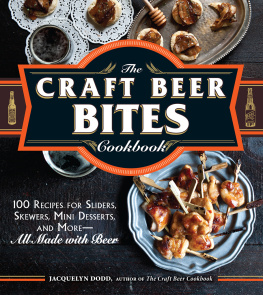






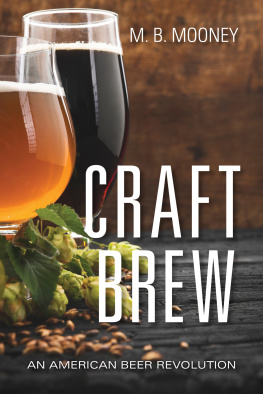
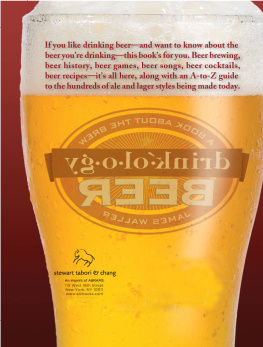
![Willis - Beer: a cookbook: good food made better with beer: [recipes]](/uploads/posts/book/224368/thumbs/willis-beer-a-cookbook-good-food-made-better.jpg)
